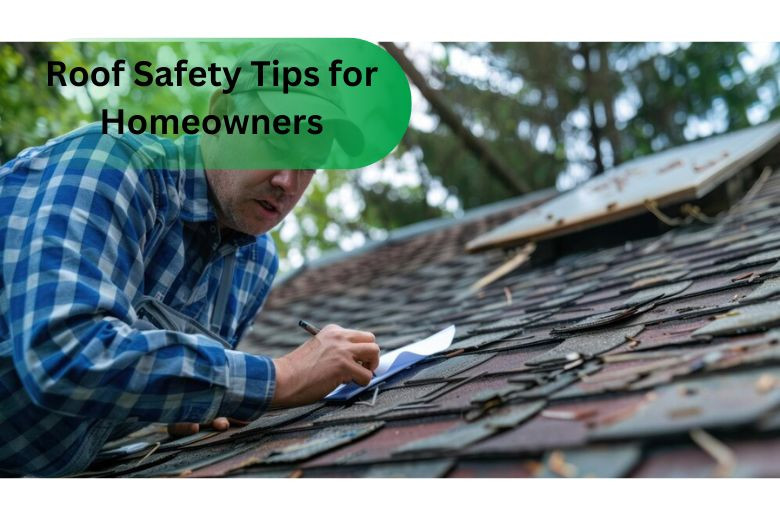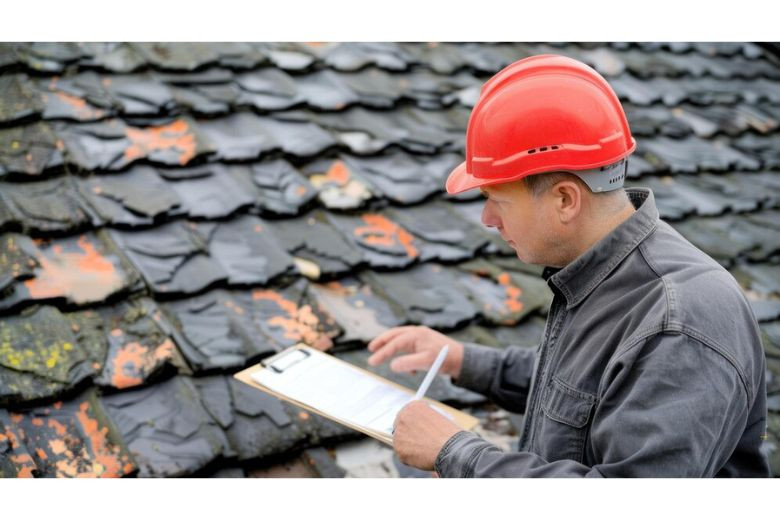Roof Safety Tips for Homeowners
Posted on September 10, 2024 by Admin

A safe roof will help protect your house and keep you safe. Whether you are doing simple maintenance, inspecting your roof, or fixing problems, observing the necessary roof safety tips can help avoid some common accidents and damages. Here's how to stay safe on and around your roof
1. Assess Safety Conditions Before Climbing
Before climbing up to the roof, inspect the weather and structural conditions. Do not climb your roof when the weather is unfavourable, such as in the event of it raining or snowing, or if a strong wind that may cause slipperiness or predisposition to falls is blowing. Ensure that your roof is dry and stable before working on it.
2. Proper Safety Equipment
Safety equipment for roof work is very important. Without a doubt, a person will be walking on the rooftop, so non-slip shoes or boots are vital to prevent one's feet from slipping. When working at heights on steep roofs or those with high pitches, a safety harness is greatly encouraged. Ensure that ladders used are in good condition and always extend at least three feet above the edge of the roof for safe access onto it.
3. Inspect Your Ladder Carefully
Your ladder is a critical part of your roof safety. Inspect the ladder for any signs of damage or wear before use. Be sure that it is on stable, level ground, and at an angle of 75 degrees to ensure stability. Whenever possible, have someone hold the base of the ladder while you are climbing.
4. Avoid Overreaching and Avoid Too Much Weight
Be sure to never overreach while on the roof; it is most likely that you will become unbalanced. If you cannot reach, move the ladder or your position so that you can still maintain a solid footing. Remember that you will be adding weight to the roof, so it is not advisable that you burden it with too much weight all at one time, thereby causing the unnecessary straining of the structure of the roofing. Consequently, try to bring only the exact tools and materials needed to perform the task at hand to avoid adding unnecessary load.

5. Watch Out for Hazards on the Roof
Look out for such hazards as loose shingles, sharp edges, and exposed nails on the roof. Wear the necessary protective clothing to avoid cuts and abrasions. Always exercise caution on an area with poor drainage or ponding water, for it can be terribly slippery and dangerous.
6. Work with a Partner
Having a partner working with you on the roof will increase the safety factor. A second person can steady the ladder, hand up tools and materials, and provide a means of escape should the need arise. They can also be useful for keeping a lookout for possible dangers and problems.
7. Regular Roof Inspections
Timely inspections might just locate and resolve an emerging problem before it becomes significant. Perform a visual examination from the ground, but if safe, use ladders for examination. Indications of missing shingles, leakage, or a potential source of damage due to debris should be considered.
8. Consider Professional Help
Necessary Precautions: If one of these conditions is found in you, or if, for any reason, you are in doubt about working on the roof without risking injury to yourself, you may wish to hire a professional roofer. Professionals are familiar with safety practices. They have the most appropriate tools and can handle repair work speedily, without exposing themselves to risks.
9. Gather Tools and Materials
Keep your tools and material safe while you work on the roof. Do not carry them as you may drop the tools on someone or hurt yourself. Store loose material properly or discard it, so workers do not trip on it.
10. Maintain Your Roof
Regular maintenance is highly encouraged in matters concerning roof safety. Gutters and downspouts should be cleaned after some time to avoid blockages, for free water flow. Trim overhanging branches and remove debris, reducing the risk of falling material on workers.
Also Read :
How to Deal with Roof Leaks During a Storm
The Role of Gutters in Roof Maintenance and Longevity
The History and Evolution of Roofing Styles
How to Choose the Right Roof for Your Climate
Faqs
-
1. What type of safety gear should I wear when working on my roof?
When you are working on your roof, wear non-slip shoes or boots to ensure you can grip your roof properly. Use a safety harness if you are dealing with steep or high-pitched roofs. Also, make sure you use a stable ladder extended at least three feet above the roof edge. Helmets could also add to your safety.
-
2. How can I ensure that my ladder is safe to use?
Inspect your ladder before use for any damage or wear. Set it up on level, firm ground and then place the ladder at an angle of 75 degrees for maximum stability. Make sure the top of the ladder extends a minimum of three feet above the edge of the roof and that, whenever possible, someone holds the bottom of the ladder while you climb.
-
3. What can I do if the roof is slippery?
Unless your roof is absolutely dry, don't climb or work on it. Wear non-slip footwear; never overreach, as it can easily lead to a loss of balance. Protection by means of safety harnesses should be used whenever possible, and the enterprise should be postponed in unfavorable weather conditions.
-
4. Why is it important to have a partner when working with roof tasks?
It's much safer working with support in a team of two. The second person provides support and assistance if required. A second person is available to support ladders, pass tools and materials, and render immediate assistance when something goes wrong. They will look out for hazards while you are concentrating on the job.
Recent Post
- Top Plumbing Service Providers in Arizona, USA
- Top 10 Electrician Service Providers in Alabama, USA
- Top 20 Roof Repair Service Providers in Alabama, USA
- The Role of Roof Insulation in Energy Efficiency: Tips and Tricks
- Understanding Roof Damage from Wildlife and How to Prevent It
- How to Choose the Best Roofing Contractor for Emergency Repairs
- Roofing Maintenance for Historic Homes: Preserving Architectural Integrity
- The Importance of Proper Attic Ventilation for Roof Health
- How to Identify and Prevent Roof Mold and Mildew
- The Best Practices for Removing Snow from Your Roof